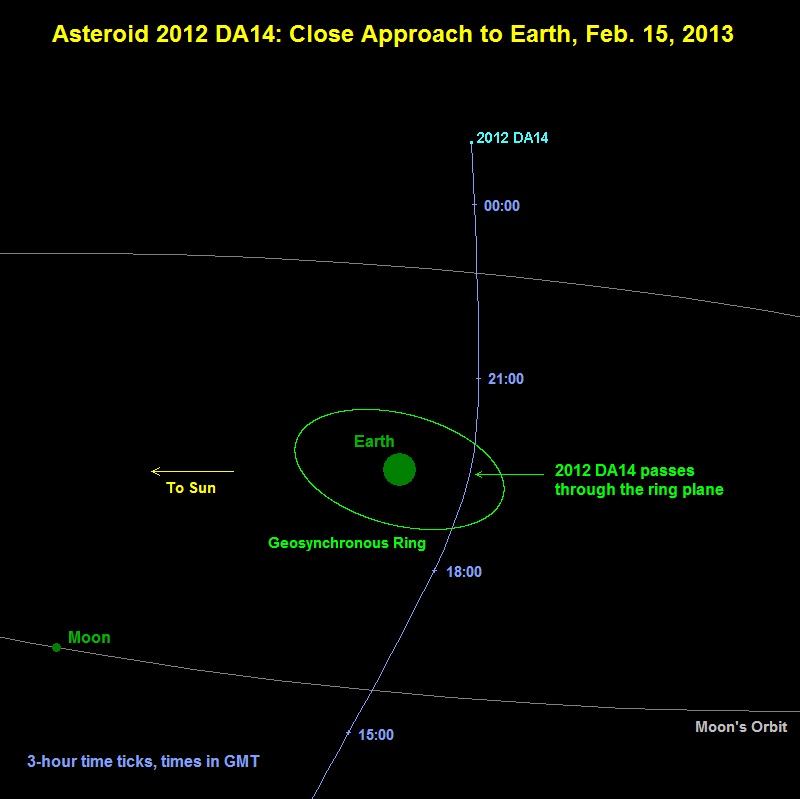Asteroid 2012 DA14 will pass closest on February 15, 2013. As the image above shows, it will pass much closer than the orbit of the moon – closer even that orbiting geosynchronous satellites (22,000 miles). Image via NASA. Read more about the close asteroid flyby here.
Still, our Earth is being bombarded with objects from space with regularity – over timescales typically longer than our human lifespans – as astronomers have now realized. Asteroid 2012 DA14 will not strike us on February 15, 2013. But, if it did, its potential for destruction is being compared to an event in Siberia in 1908: the Tunguska event. In 1908, a small comet or asteroid exploded in Earth’s atmosphere and flatted miles of Siberian forest; it could have flattened a city instead if the timing had been different. Earth is mostly water, so an incoming asteroid would likely land in the ocean. But the potential for destruction remains.
That is why, if an opportunity arises to express an opinion on whether funding should continue for astronomers to track and study near-Earth objects … well, personally, I would vote yes.
For those who can't see the tiny link that Posterous provides above:
http://earthsky.org/space/relative-positions-of-near-earth-asteroids-within-0...


No comments:
Post a Comment